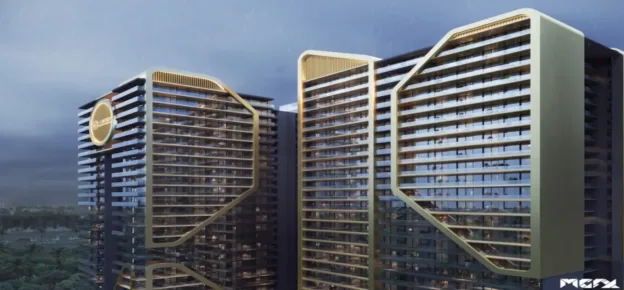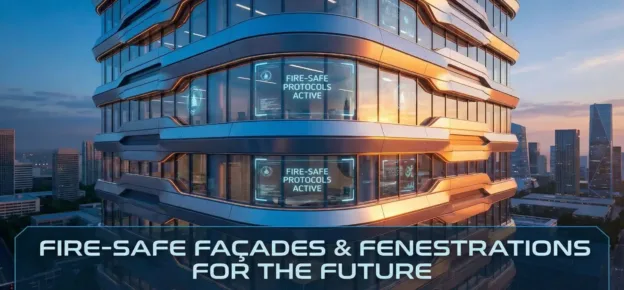Sustainability has become a defining principle in modern architecture, and façades and fenestration systems play a crucial role in shaping a building’s environmental performance. As the demand for energy-efficient, low-carbon buildings rises, architects, engineers, and manufacturers are innovating to deliver solutions that reduce energy consumption, improve occupant comfort, and minimise environmental impact. Advanced glazing technologies, high-performance materials, and intelligent façade systems now enable buildings to respond dynamically to climate conditions while maximising natural light and ventilation. In addition, integrating renewable energy features, such as building-integrated photovoltaics, furthers the sustainability agenda. The shift towards net-zero buildings and smart cities is driving the adoption of these innovations, ensuring that façades and fenestration not only enhance aesthetics but also contribute significantly to energy savings and carbon footprint reduction. This evolving landscape demands a collaborative approach among stakeholders to embrace sustainable design principles and regulatory standards for a greener built environment. We interviewed subject-matter experts, and their views are presented in this cover story.
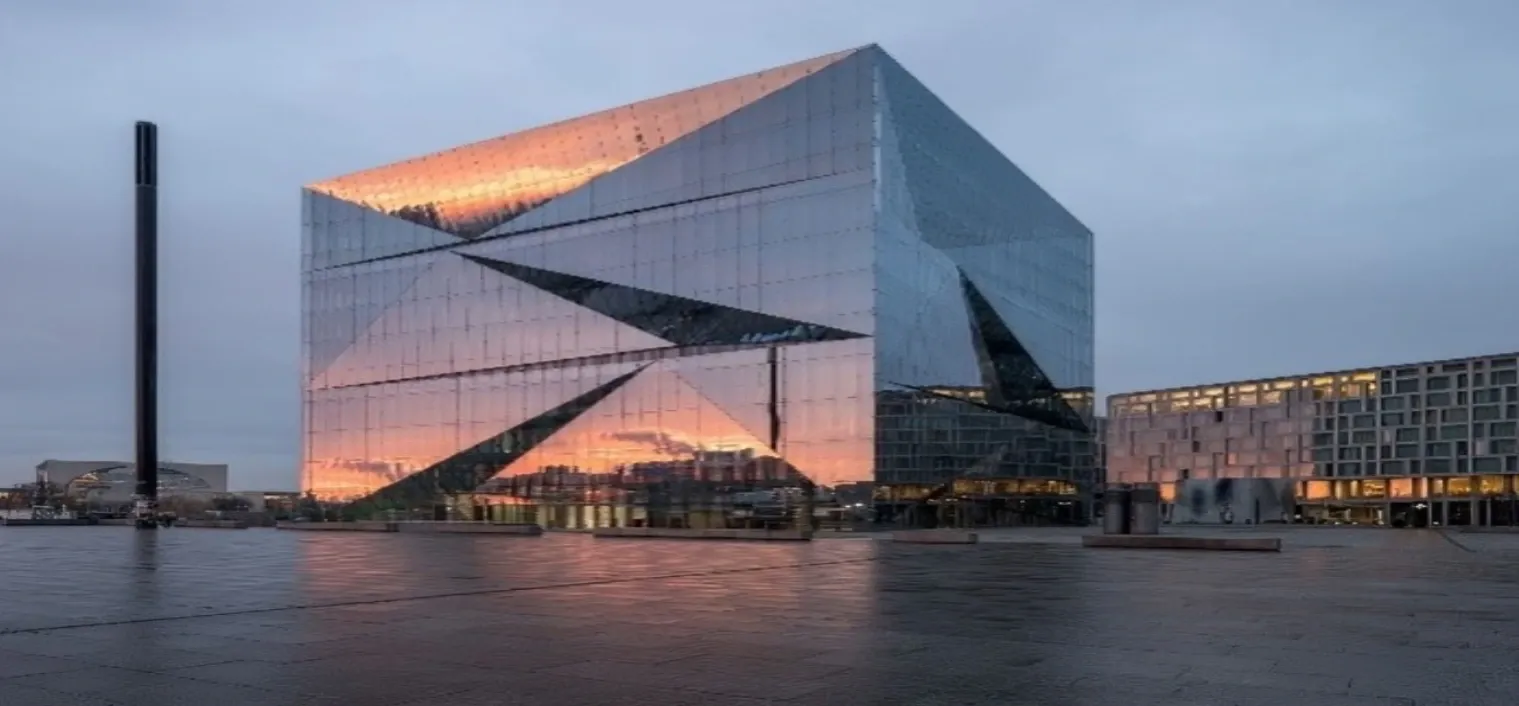

Mohammed Almasri, Façade Manager at OCC Weavers, says that to him, sustainability in façades is achieving a clever balance between performance and environmental impact. As façades contribute to over 40% of a building’s heat loss or heat gain, it has a significant impact on energy consumption. So, being a façade engineer, he addresses sustainability from various angles, such as low-carbon materials, good daylight with high VLT, enhanced acoustic and thermal insulation, while still taking care of a good exterior view. He believes it’s all about integrating all these to provide an efficient envelope to support green certifications such as LEED through contributing to energy efficiency, interior comfort, and material performance.

Emílio Rodrigues, Senior Architect at NORR Group, notes that sustainability in façades and fenestration goes beyond energy efficiency; it’s about crafting an envelope that engages intelligently with its environment while preserving architectural intent. He believes a truly sustainable façade maximises natural daylight, promotes passive ventilation, and mitigates thermal loads, without compromising the spatial and cultural identity of the project. It should elevate both environmental performance and the quality of human experience.
He further shares that the National Bank of Kuwait by Foster + Partners rises 300 metres above the City, the tower’s triangular form creating natural self-shading. Its innovative concrete diagrid reduces material usage by 40%, while automated solar-responsive fins within the triple-glazed façade dramatically cut cooling demands despite the region’s extreme desert temperatures. Germany’s first carbon-positive office building generates more energy than it consumes through an innovative façade system. By thoughtfully preserving the original structure and integrating phase-change materials, the design achieves remarkable thermal balance. Lush vertical gardens work alongside smart rainwater systems to create a truly regenerative urban workspace experience.

Harishankar Kallepalli, a Façade Engineer, opines that sustainability in façades and fenestration is about finding the right balance between aesthetics, efficiency, and environmental responsibility. For him, it means designing and building envelopes that minimise energy consumption, reduce carbon footprints, and enhance the well-being of people. It’s about making informed design choices that positively impact both people and the planet. He adds that, for example, we can design the best net-zero building, but the question is whether it is also sustainable. A building can achieve net zero through energy efficiency and solar power, yet still use non-renewable and high-carbon materials, which increases the carbon footprint. Similarly, a sustainable building may not reach net-zero status but could excel in resilience, resource conservation, and increased life cycle. He believes true sustainability looks beyond operational energy and considers the whole lifecycle—design, construction, usage, and eventual deconstruction.

Karim Elnabawy Balbaa, Associate Director – Sustainability, New Murabba, explains that sustainability in façades and fenestration is about striking the right balance between performance, resilience, and aesthetics while minimising environmental impact over the entire lifecycle. According to him, a sustainable façade isn’t just a design element; it’s a critical system that determines how a building interacts with its environment, regulating heat gain and loss, optimising daylight, and enhancing occupant comfort and energy efficiency.
He emphasises that it means selecting materials that are responsibly sourced, low in embodied carbon, and durable under local climatic conditions. It means designing systems that reduce reliance on mechanical systems, integrate passive design strategies, and contribute to a building’s energy performance and long-term resilience. He notes that in regions like the Middle East, and specifically Saudi Arabia, where extreme heat and solar radiation are major challenges and a climate hazard, façades play a frontline role in climate adaptation, resilience and resource efficiency.
He concludes that ultimately, sustainable façades are not just about reducing energy bills or achieving a sustainability certification; they are about creating buildings that are healthier for people, smarter in function, and more responsible toward our planet.

Sam A. Mohammad, Founder, 5D Projects & Caribbean Azure, states that sustainability in façades means designing with foresight, thinking beyond performance labels toward the full material lifecycle. He believes it’s about creating envelopes that are energy efficient today and resource reservoirs tomorrow.
He explains that this translates to using prefab modular systems, optimising geometry with AI, and most importantly, ensuring every component is documented in platforms like Madaster. By registering façades in Madaster, we give them a material identity, capturing their composition, carbon footprint, and reuse potential. Combined with design-for-disassembly and BIM-integrated planning, this enables façade systems that are not only sustainable but circular by default.
He affirms that for him, sustainability is not an add-on. It’s embedded in how we engineer, automate, and assemble every layer of the building skin.

Abdullah Quadri, Sustainability & Facades Consultant, Effisus – Excellence in Weatherproofing, shares that when he thinks about sustainability in façades and fenestration, it’s really about the bigger picture — not just using “green” materials, but making sure the entire envelope performs well over time. He explains that façades can make or break a building’s energy performance. They can be responsible for nearly 40% of a building’s energy gains or losses, so how we design and detail them plays a huge role in overall efficiency and occupant comfort. He believes a sustainable façade should do a few key things: reduce energy use, support a comfortable indoor environment, require minimal maintenance, and ideally be built from low-impact materials that can be reused or recycled down the line.
He gives the example of The Edge building in Amsterdam, which uses a double-skin façade and smart ventilation to reduce energy demand by about 70% compared to standard offices. That kind of integration, he notes, shows how façades are no longer just skin — they’re part of the building’s environmental strategy.
Major Trends In Façade And Fenestration Systems Towards A Greener Future
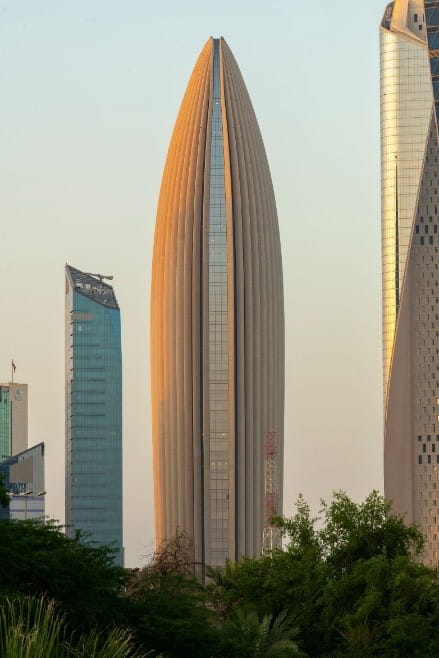
Almasri says he sees a number of trends emerging that significantly drive façade systems towards sustainability. He notes the importance of fire safety with sustainability, pointing out that, post-Grenfell’s devastating fires, the industry understood the significance of employing fire-resistant and sustainable materials. He observes that the trend now strongly tilts towards panels that are both fire-resistant and sustainable.
According to Almasri, BIM integration has made early-stage façade planning indispensable. It enables simulation of energy models, condensation management, and performance pre-optimisation even before the start of construction. He notes that this allows for intelligent decisions between roofing insulation and high-performing façades based on building type.
He adds that advanced glass technology is moving rapidly, highlighting selective coatings that admit light but not heat, and dynamic glazing—such as electrochromic glass—that changes in response to the sun. He also points out that BIPV is now financially feasible, offering both energy production and transparency.
Speaking about vertical gardens, Almasri describes them as a wonderful means of minimising the heat island effect and contributing to better air quality. However, he notes the challenge of balancing these systems with water consumption in their area.
He opines that 3D printing will increasingly be used in façade components, particularly for detailing in aluminium and glass, and that it may be feasible for low-rise buildings first.
Rodrigues observes a clear trend toward adaptive and high-performance façades, highlighting systems that can respond to climate conditions in real-time. He mentions innovations such as kinetic shading devices, electrochromic glazing, and façade-integrated photovoltaics.
He notes that environmental simulations are increasingly used in the early design process and that architects are working more closely with engineers and façade consultants to test performance alongside form. According to him, carbon accounting, encompassing both operational and embodied emissions, is becoming a critical factor in material selection and systems design.
Rodrigues cites the kinetic façade of the Institut du Monde Arabe (IMA) in Paris, designed by Jean Nouvel, as a stunning example of responsive architecture. He explains that the façade features 240 moucharabiehs that open and close in response to sunlight, acting like camera apertures to control light and heat, offering both functionality and visual appeal.
Kallepalli notes that from a technological perspective, façades are becoming smarter and more responsive. He highlights the rise of dynamic façades, automated shading systems, and climate-responsive skins. He adds that parametric design tools like CFD and thermal simulations have become highly accurate, aiding in better energy modelling and performance-driven designs. He also observes that prefabricated systems are gaining interest due to their precision, reduced material waste, and shorter construction time.
From a sustainability perspective, Kallepalli says there is a growing shift from mere energy efficiency to holistic environmental responsibility. He points to the preference for materials with low embodied carbon, such as recycled metals, natural stone, and wood. He mentions that in Europe, there is a visible shift from a linear to a circular economy, where façades are designed not only for performance but also for reuse, disassembly, and recyclability. He adds that façade systems are being developed with material passports, modular assemblies, and lifecycle transparency like EPDs in mind, alongside the implementation of new and strict laws.

Balbaa states that dynamic and climate-adaptive façades are transforming façades from static skins into intelligent systems. He explains that innovations such as automated shading devices, thermochromic glazing, and double-skin façades optimise thermal performance, minimise solar gain, and improve daylight control. He notes that such dynamic behaviour reduces energy demand while enhancing occupant comfort and building resilience, especially in extreme climates.
On the integration of photovoltaics (BIPV), Balbaa points out that façades are becoming a medium for energy generation. He acknowledges that while BIPV systems are generally less efficient than rooftop panels, they offer the advantage of producing clean energy without compromising design. This, he says, enables architects to maintain colour themes, branding, or transparency, particularly in iconic or high-visibility structures.
Speaking about circular economy designs, Balbaa highlights the use of materials with low embodied carbon, high recycled content, and local availability. He states that lifecycle assessments have become powerful tools in evaluating environmental impact, allowing sustainability practitioners to prioritise long-lasting, high-performance, and environmentally responsible solutions throughout the building’s life.
Balbaa also observes a return to vernacular architecture, noting a shift back to context-driven, climate-responsive design. He refers to traditional strategies like mashrabiyas, wind catchers, courtyards, and deep overhangs being reinterpreted using modern materials and technologies. He notes that in Saudi Arabia, styles such as Salmani and Najdi offer sustainable façade solutions that leverage shading, thermal mass, and local materials to passively control heat and light. He says these culturally embedded solutions are proving timeless in their efficiency and relevance.
Mohammad opines that we are in a transformative phase, identifying several powerful trends. He highlights that modular and demountable façades are gaining traction, with dry-joined aluminium systems designed for reversibility now adopted on large-scale projects like Circle House in Denmark.
He says that biocomposite panels made from flax or hemp are cutting embodied carbon by up to 50%, a direction validated by EU projects like OSIRYS. He adds that recycled aluminium, especially Hydro 75R and 4.0 with verified post-consumer content and EPDs, is being specified more often.
Mohammad notes that BIPV-integrated façades are becoming more aesthetically flexible, aided by colourised solar glass and plug-and-play substructures from initiatives like BIPVBOOST. He also points to parametric and AI tools enabling performance-driven façades to be designed faster, more intelligently, and with better material efficiency.
He concludes that data-centric workflows are underpinning all these advancements, with façade elements registered in Madaster, linked to CO₂ dashboards, and designed to meet EU Taxonomy and ESG standards from the outset.
Quadri observes that a lot is happening in façade design, and it is encouraging to see real progress. He highlights dynamic façades as a major trend—systems that respond to sunlight, temperature, or air quality. He cites the Al Bahr Towers in Abu Dhabi as an example, which use responsive shading to reduce solar gain by nearly half.
He notes a growing emphasis on transparency, where clients and project teams increasingly demand EPDs and lifecycle data. According to Quadri, it is no longer sufficient to claim a product is “green”; people want verifiable proof.
He also mentions that circularity is gaining traction, with more façades being designed for disassembly and reuse, such as in The Circular Building in London. He finds it refreshing that the conversation is shifting from one-off solutions to long-term thinking.
Lastly, Quadri says that early collaboration is becoming non-negotiable, with architects, engineers, and contractors starting to work together earlier to create smarter, more efficient envelopes that align better with the building’s overall goals.
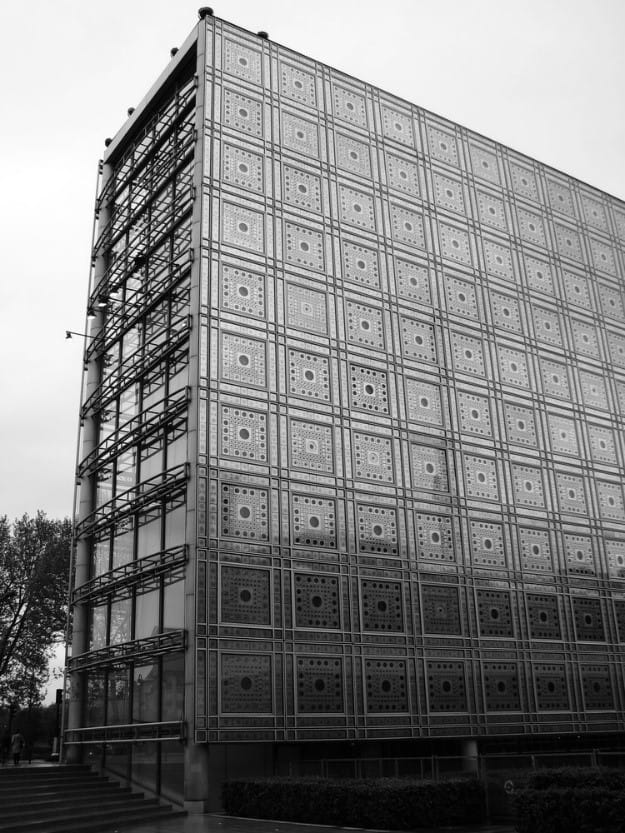
Emerging Materials For Fenestration And Sustainable Façades
Almasri says that, speaking frankly, he still sees glass and aluminium taking the forefront. It’s just the way we employ them, such as low-E coatings, recycled material content, and composite assemblies. He adds that materials like PTFE mesh become interesting for dynamic façades because they weigh durability against performance.
Rodrigues opines that materials offering a balance of sustainability, performance, and aesthetic value are rising to the forefront. Recycled aluminium, high-spec glazing with thermal coatings, and cross-laminated timber are gaining ground. He notes that vernacular and bio-based materials like terracotta, rammed earth, and hempcrete are also being revisited. According to him, these materials, when used thoughtfully, allow us to lower embodied carbon while maintaining design quality and contextual relevance.
He adds that natural and recycled materials offer low embodied carbon and design versatility. Throughout contemporary architecture, Estudio Carme Pinós uses a terracotta cladding, lauded for its design flexibility, distinctive colours, natural textures, durability and sustainability. This ceramic element, functioning as a brise-soleil, covers this part of the building, highlighting its sculptural form while also safeguarding the students’ privacy. He further notes that dating back to the Babylonians, who made wide use of terracotta in palaces, temples and statues, it is a proven material that has stood for thousands of years, and will likely stand for thousands more.
Kallepalli observes that sustainable façade materials are evolving rapidly as the industry shifts toward more climate-conscious design. He sees a few key materials gaining prominence, like high-performance glass such as Vacuum Insulated Glass (VIG) and electrochromic glass, which improve thermal insulation and adjust transparency based on sunlight exposure, reducing energy consumption.
He also mentions smart membrane systems like translucent membrane cladding, which help regulate indoor temperature by diffusing light while insulating interior spaces. He includes phase-change materials (PCMs), insulated panels, recycled and upcycled materials such as reclaimed bricks, recycled plastic, and recycled metals. He highlights that natural materials and bio-based composites—such as mycelium, currently being researched at his university—and green façades are also part of this evolving material palette.
Balbaa highlights Najdi bricks, noting that drawing from centuries of vernacular architecture, these bricks-traditionally made from a mix of mud, straw, and clay, are regaining interest as a sustainable façade solution. He explains that these bricks are not only biodegradable and locally sourced but also offer excellent thermal insulation due to their high thermal mass, which helps regulate indoor temperatures by absorbing heat during the day and releasing it at night.
He states that their composition and fabrication process have a much lower environmental footprint compared to conventional fired bricks or concrete blocks. In addition, their natural appearance lends an authentic character to modern buildings that aim to integrate cultural identity with sustainability. He emphasises that Najdi bricks are also durable and compatible with modern construction techniques, making them a compelling option for contemporary green buildings in regions like Saudi Arabia.
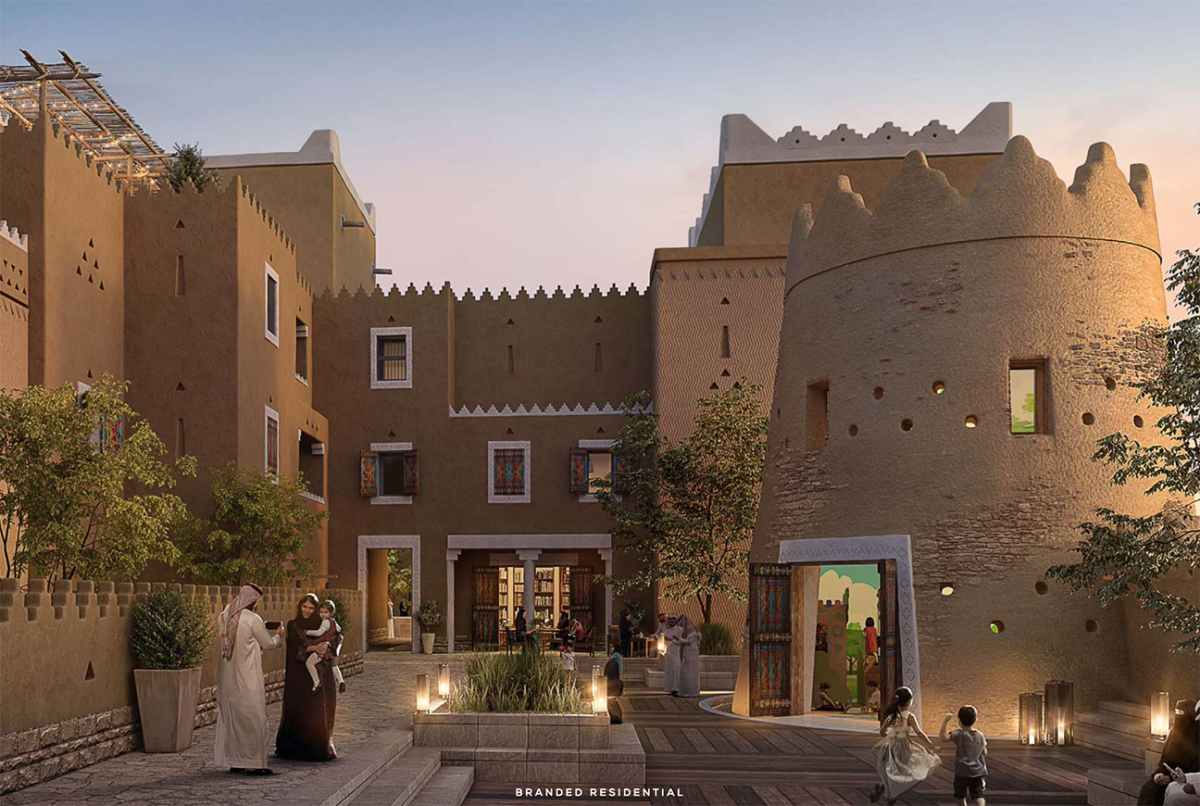
He further elaborates on carbon sequestration, explaining that carbon-stored materials represent a transformative shift in how we think about building materials, not only minimising emissions but actively removing carbon from the atmosphere and storing it within the built environment. He cites examples like Carbon Cure and similar technologies, where CO₂ is captured and injected into concrete during mixing, then mineralised and stored permanently, reducing the carbon footprint of concrete by up to 30%. He also mentions bio-cement and algae-based cement, still in early development phases, which eliminate the need for high-temperature processes and store carbon during curing.
Balbaa adds that high-performance glazing systems are essential for any fenestration within the envelope. As energy efficiency becomes central to sustainable design, glazing systems are undergoing a technological evolution. Double and triple-glazed units with low emissivity (low-E) coatings, inert gas fills (like argon or krypton), and thermally broken frames are now widely used in high-performance façades. These systems, he says, significantly reduce heat transfer, improve solar control, and prevent unwanted glare, making indoor environments more comfortable while lowering reliance on HVAC systems.
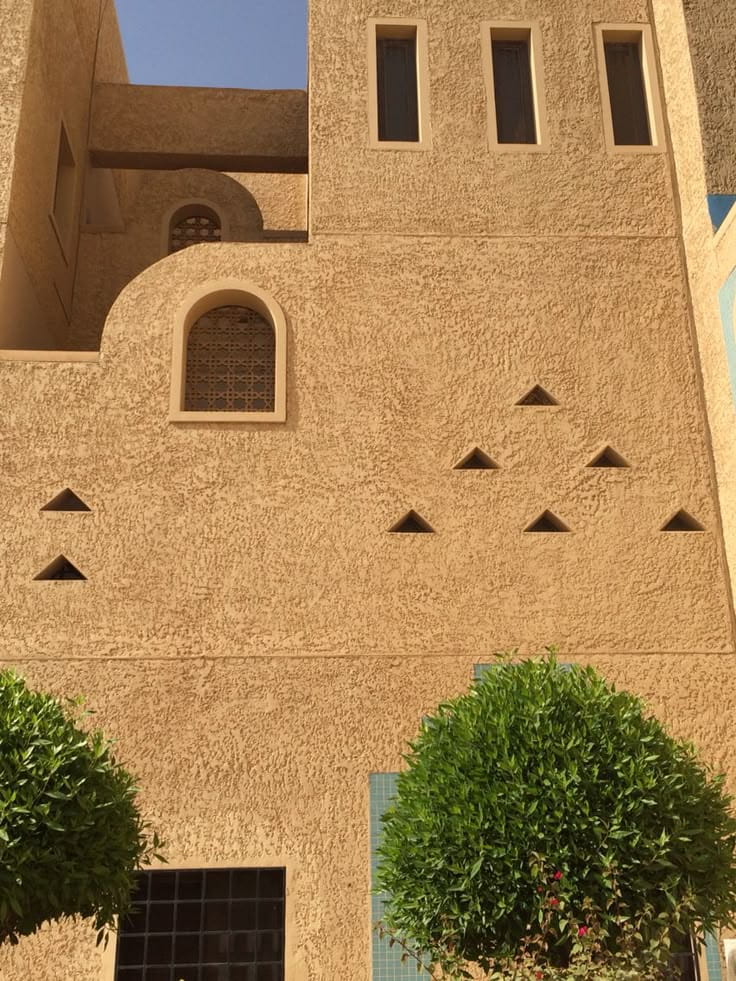
Mohammad notes that we’re in a new era of low-impact, high-performance materials. He lists the standouts: post-consumer recycled aluminium, especially from closed-loop sources—reliable, structurally proven, and climate-conscious; natural fibre composites like flax, jute, or hemp bonded with bio-resins—offering strong, lightweight skins with minimal environmental burden; glass with high recycled content, or better yet, reclaimed façade glass—cut, reshaped, and recomposed using AI matching to form mosaic-style curtain walls. He also mentions coloured BIPV units—solar panels that double as rainscreens and come in a range of finishes to satisfy both architects and energy models.
Quadri says that we’re seeing a real evolution in materials. He believes engineered timber is definitely one to watch—it’s renewable, stores carbon, and when used properly, it’s both durable and beautiful. He notes that more façades are being made from mass timber and CLT, especially in hybrid systems.
According to him, recycled aluminium is another major development, dramatically cutting down on embodied carbon, with manufacturers increasingly able to offer systems with high recycled content without compromising quality.
He states that smart glazing is having its moment—triple-glazed units, low-e coatings, and even electrochromic glass are helping reduce heat gain and loss while improving daylight.
He also points out the significance of high-performance membranes, which are often overlooked. These contribute to airtightness and moisture control—critical factors for energy efficiency, especially in colder or wetter climates.
Quadri concludes by stating that beyond the material itself, the industry is starting to care more about where materials come from, how they’re made, and what happens to them at the end of their life. That full lifecycle view, he says, is becoming the new standard.
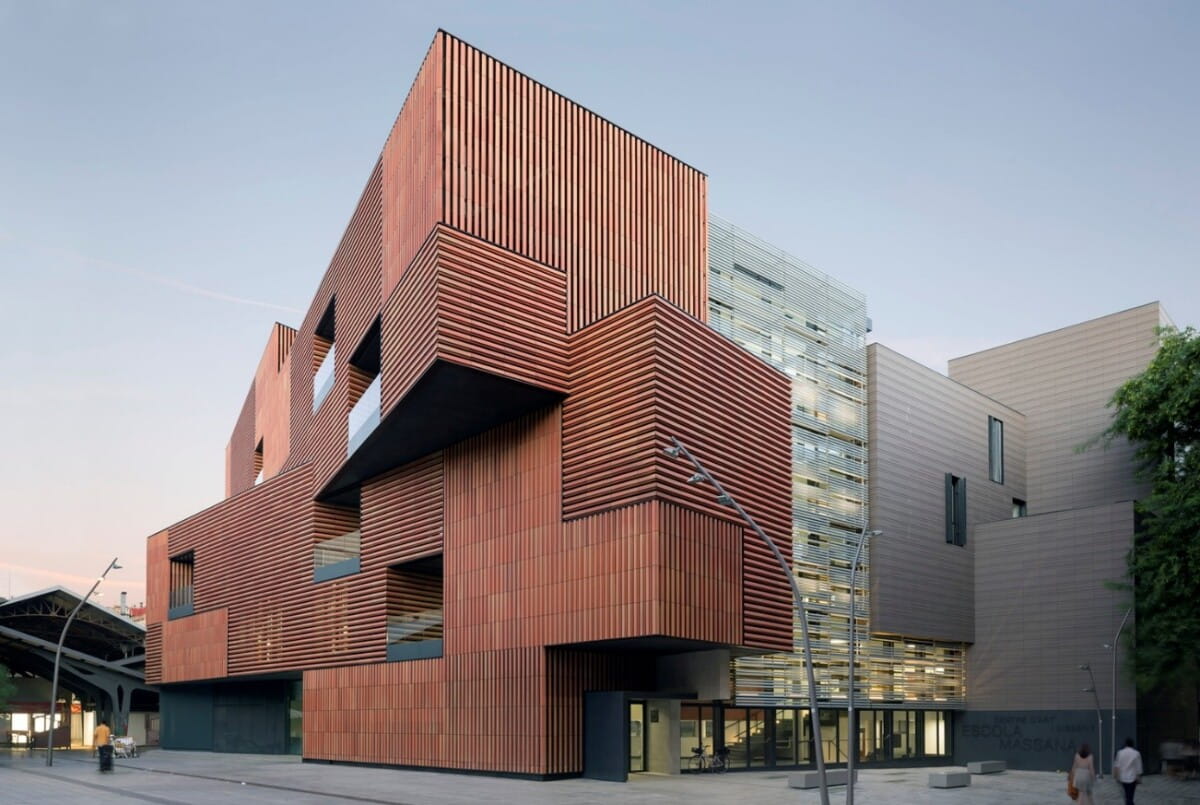
Importance Of Parametric Design In Shaping Visually Impactful And Performance-Driven Façades
Almasri says parametric design has a significant role to play—it allows us to examine various performance aspects together, such as U-value, shading, daylight, and wind loads. Rather than relying on static designs, parametric software enables us to optimise the façade shape and components using real information. It comes in handy when we design dynamic components, such as mobile shading units. This saves time and maximises efficiency.
Rodrigues notes that parametric design has become an indispensable tool. It allows us to model, test, and optimise façade geometry based on site-specific data, from solar exposure to wind flow. What used to be a trade-off between aesthetics and performance is now a synthesis. With the right tools, we can design a façade that is sculptural, efficient, and precise, where every aperture or shading fin serves both a visual and functional purpose. Parametric design has fundamentally reshaped how we approach the design process, turning complexity into opportunity. He adds that parametric workflows optimise form and performance in tandem.
Rodrigues also shares the example of environmental and waste management company Bee’ah, which commissioned Zaha Hadid Architects to create their headquarters as a sustainable showcase. The undulating dune-like structure operates entirely off-grid, combining solar arrays with AI energy management. Its sinuous form channels desert winds for natural cooling while embodying the company’s zero-waste philosophy through innovative recycled materials.
Kallepalli opines that parametric design is revolutionising façade architecture. Parametric design plays a crucial role in shaping façades that are both aesthetically pleasing and functionally optimised. It has improved the scope for both form and functionality. By utilising computational algorithms, designers can simulate real-life scenarios and optimise form, function, and sustainability in unprecedented ways.
According to Kallepalli, from a design standpoint, parametric tools enable the creation of complex geometries and patterning that respond to site-specific data. This opens the door to façades that adapt to their environment through optimised shading and material use. On the performance side, parametric workflows can simulate and iterate environmental behaviour in real-time, allowing early decisions that dramatically impact energy efficiency, thermal comfort, and material optimisation.
Balbaa states that parametric tools allow designers to evaluate hundreds of façade configurations based on variables like solar exposure, wind flow, daylight penetration, thermal gain, and material efficiency. This results in data-informed façades that perform better in terms of energy efficiency, occupant comfort, and material use, without compromising creativity or architectural expression.
He adds that in hot climates like Saudi Arabia, parametric design enables the fine-tuning of shading systems, screen patterns, and apertures to reduce solar gain while maximising natural light. It’s particularly powerful when used alongside environmental simulation software, allowing design teams to iteratively test and refine façades based on real climate data. Balbaa further explains that complex geometries generated through these tools can be rationalised into buildable components, reducing material waste and construction errors. This makes it not only a design tool but also a sustainability enabler.
Mohammad explains that parametric design has become a cornerstone of modern façade engineering. It enables design teams to link visual intent directly with performance criteria, such as daylighting, solar control, ventilation, and material efficiency. Rather than drawing static geometry, architects and engineers can set performance targets, then use algorithms to generate and evaluate hundreds of iterations that balance function, form, and fabrication logic.
According to Mohammad, this approach is particularly valuable in sustainable projects, where façades must often satisfy competing demands: aesthetic ambition, energy performance, modularity, and circularity. Parametric tools help resolve these tensions early, optimising shapes, minimising waste, and pre-validating constructability.
He highlights that what makes it truly transformative is its integration with digital fabrication and lifecycle platforms. Optimised façade geometries can now feed directly into prefab manufacturing workflows or material passport systems like Madaster, streamlining the transition from design to construction while preserving environmental intelligence. In this way, parametric design is not just a visual tool—it’s an engine for precision, sustainability, and accountability across the entire façade lifecycle.
Mohammad notes that parametric design is a huge asset, not just for creating striking forms, but for making sure those forms perform. It allows us to simulate things like daylight, solar gain, wind loads, and thermal behaviour before we even settle on the final design. That means we can iterate quickly and make informed decisions early on—when it still counts.
He gives the example of the Morpheus Hotel in Macau—the free-form exoskeleton was shaped using parametric tools to get the most daylight while limiting solar gain. It’s visually stunning but grounded in performance. According to Mohammad, the best part is that it doesn’t limit creativity—it actually opens up more possibilities, because you’re not guessing. You’re testing ideas in real-time, and the data helps guide you towards smarter, more effective solutions.

Common Challenges In Incorporating Sustainable Façade Strategies In Projects
Almasri says one of the major challenges is achieving the right balance among daylight (VLT), acoustics, energy efficiency, and views. He notes that sometimes they struggle with material availability—often not every sustainable choice lends itself to sourcing locally, particularly when it comes to specialised glass and advanced insulation materials. So they must work within the constraints of local supply chains while maintaining high performance.
Rodrigues observes that one ongoing challenge is aligning all stakeholders around long-term sustainability goals, especially when upfront costs are involved. He points out that clients may initially resist strategies that seem more expensive, even if the lifecycle benefits are clear. According to him, they also face challenges related to local building regulations, supply chain limitations for certified materials, and coordinating performance with constructability. However, he opines that these challenges are also opportunities to innovate, where often, the most rewarding designs emerge from constraint. Nicknamed “the computer with a roof,” Deloitte’s headquarters deploys an astonishing 28,000 sensors that continuously optimise environmental conditions. This digital nervous system helps the building generate 102% of its energy needs while personalising workspaces to individual preferences. The Edge earned the highest BREEAM sustainability score ever recorded, redefining what commercial architecture can achieve.
Kallepalli notes that one of the most persistent challenges is the availability and cost of sustainable materials. He explains that although innovative and eco-friendly materials are gaining popularity, they are still often more expensive or harder to source locally, especially in regions where traditional construction methods dominate. He adds that another challenge lies in integrating sustainability early in the design process. Façade performance is deeply linked to orientation and materiality decisions that should ideally be made collaboratively from the start. But in real-world projects, sustainability is sometimes treated as an add-on rather than a core design driver. He further opines that awareness and building code updates can also play a vital role in some regions.
Balbaa states that one of the key challenges is achieving a façade that meets both sustainability goals and the architect’s design vision. He mentions that high-performance systems—like dynamic shading, BIPV, or advanced glazing—may sometimes limit design freedom or require trade-offs in visual transparency, texture, or form. He also highlights that another challenge is related to CAPEX. Sustainable façade elements often come with higher upfront costs, which can be a concern for clients focused on short-term budgets. Demonstrating the long-term operational savings and lifecycle value of these systems, especially in regions where energy is still relatively subsidised, can be difficult. He concludes by noting that some project stakeholders, whether contractors, consultants, or even clients, may be unfamiliar with newer sustainable façade systems or sceptical of their benefits. This creates a need for continuous education, evidence-based advocacy, and collaborative workshops to build buy-in.
Mohammad opines that the biggest challenge is aligning ambition with execution. He outlines specific issues, such as short-term budgeting, where clients often focus on initial costs rather than total lifecycle savings or material residual value. He also notes supply chain gaps, where biocomposite or BIPV materials aren’t always locally stocked or certified, thus slowing adoption. According to him, digital disconnects can arise if stakeholders don’t work in shared BIM or link into platforms like Madaster, causing circular data to get lost between design, engineering, and site. He adds that regulatory lag is also a challenge, as codes haven’t yet caught up to façade innovations like coloured solar glass, algae façades, or prefab overcladding kits.
Quadri says there’s a learning curve on every project. He identifies cost as one of the first hurdles, as high-performance systems often come with higher upfront costs, and while they pay off long-term, not every client sees the value right away. He also highlights supply chain issues, explaining that sometimes the sustainable material desired either isn’t locally available or doesn’t have the required certifications, which can lead to compromises or delays. According to him, perhaps the trickiest challenge is alignment — getting everyone on board early. He stresses that a sustainable façade isn’t something you can bolt on at the end. You need buy-in from architects, engineers, QS, contractors – the whole team — from the start. But when that alignment happens, he believes things just flow better.
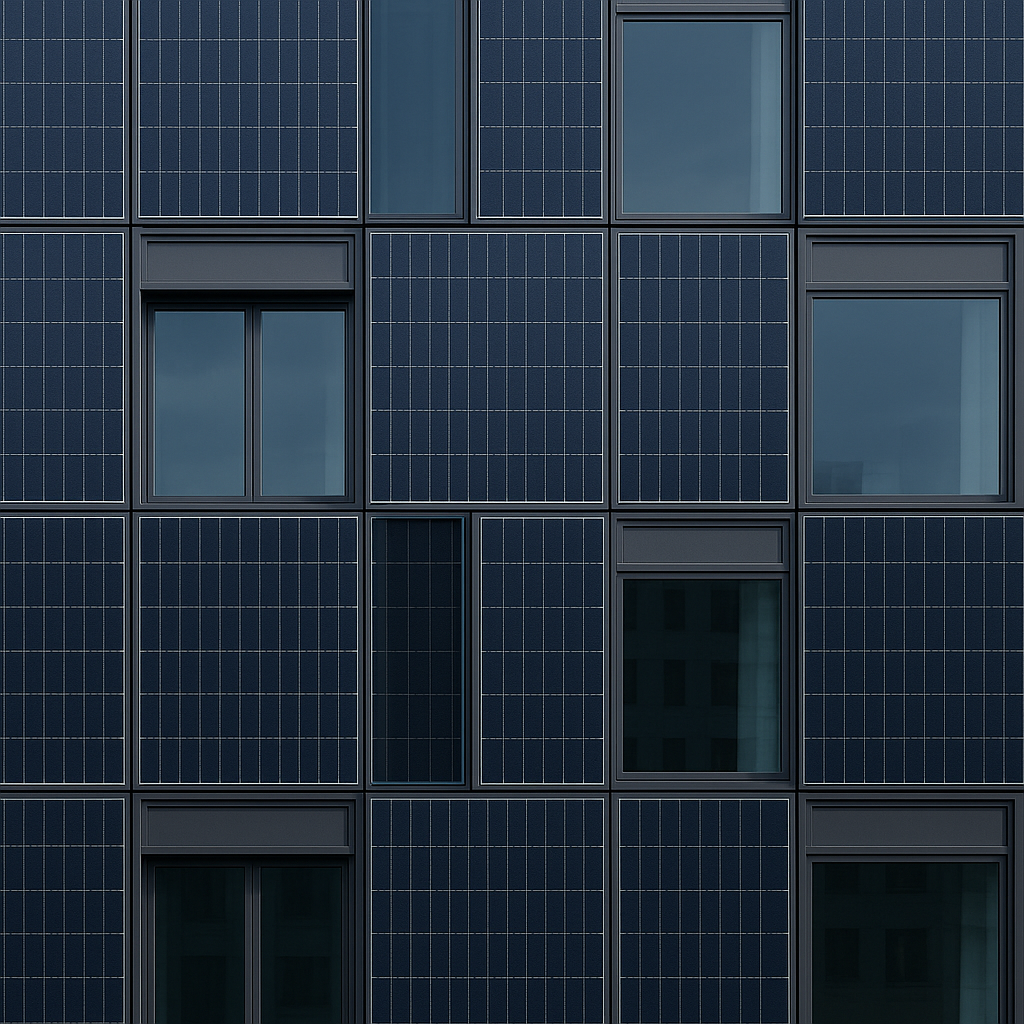
Future Of Façades And Fenestration In Net-Zero Buildings And Smart Cities
Almasri notes that façades will evolve from passive elements to intelligent and responsive systems. Integrated solar panels, sensors, and adaptive shading will become standard. He explains that dynamic façades will respond to environmental and occupancy data. We will also see the wider use of simulation in design, and high-performance, sustainable materials. According to him, in smart cities, building envelopes will contribute to energy sharing, air quality monitoring, and even digital communications networks.
Rodrigues opines that façades will evolve into intelligent, multi-functional systems, no longer merely protective skins but dynamic interfaces between buildings and the urban ecosystem. He believes future façades will generate energy, collect and respond to environmental data, purify air, regulate daylight and thermal conditions, and engage directly with users. In the context of smart cities, he says they will play a critical role in enabling responsive buildings that adapt in real-time to changing environmental and human needs. Ultimately, according to Rodrigues, façades will become central to a city’s environmental intelligence, integrating passive design strategies with active smart technologies to accelerate the shift toward net-zero, climate-resilient architecture. He adds that façades are no longer passive skins, but dynamic systems that drive sustainability, aesthetics, and innovation. As we move toward net-zero targets and connected cities, these building envelopes are set to become the most intelligent and interactive elements of the built environment.
Kallepalli states that the future of façades lies at the intersection of performance, adaptability, and environmental responsibility. He asserts that as we move toward net-zero buildings and smart cities, façades are no longer passive — they’re becoming active systems that respond to the environment, enhance energy efficiency, and even produce energy themselves. He believes data-driven design and AI-assisted simulation will shape the future of this industry. Kallepalli also notes that materials will become smarter and more responsive — self-cleaning surfaces, phase-change materials, and adaptive glazing will become mainstream. According to him, the aesthetic language of façades will be driven not just by form, but by function and interaction with climate, users, and the site.
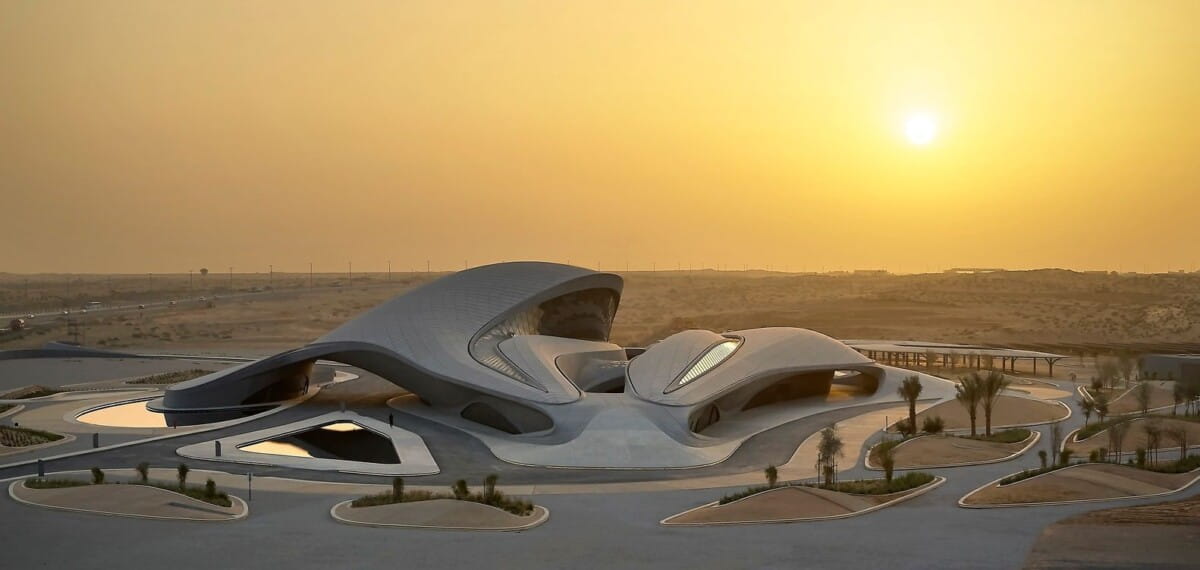
Balbaa explains that façades and fenestration will no longer be passive enclosures; rather, they will become intelligent, multifunctional systems that actively contribute to a building’s performance and the broader goals of net-zero development. He says façades will be digitally connected, energy-generating, and climate-adaptive. Building skins, he adds, will integrate technologies such as real-time sensors, responsive shading, and BIPV, transforming façades into active participants in reducing energy consumption and producing renewable power. These systems, according to Balbaa, will communicate with the grid, adjust to user preferences, and respond dynamically to environmental conditions, contributing not just to individual building performance but to the collective intelligence of smart cities.
Mohammad says the façades of the future will no longer be static enclosures — they will be intelligent, multifunctional systems at the intersection of architecture, technology, and sustainability. In the context of net-zero buildings and smart cities, he notes that façades will generate renewable energy through advanced BIPV systems seamlessly integrated into building skins, transforming vertical surfaces into power-producing assets. He adds they will adapt to real-time conditions using sensors, AI-driven controls, and materials like electrochromic glass, enhancing occupant comfort while reducing energy loads. Mohammad points out that these façades will participate in data ecosystems, collecting and exchanging information with smart building platforms and urban infrastructure to optimise performance, maintenance, and climate response. He further notes they will support circularity by being modular, disassemblable, and fully traceable through digital material passports (e.g. Madaster), ensuring components can be reused, remanufactured, or responsibly recycled. According to Mohammad, they will also contribute to urban resilience, incorporating elements like green façades, water collection surfaces, or noise-buffering skins that enhance environmental quality. These façades, he concludes, will be designed not only for beauty or efficiency, but to serve as infrastructure in their own right — capable of powering buildings, cleaning the air, regulating internal climates, and feeding valuable data into citywide sustainability frameworks. As climate policy tightens and cities push toward carbon neutrality, he believes façades will be instrumental — not just in meeting regulations, but in shaping a built environment that is self-aware, low-impact, and regenerative by design.
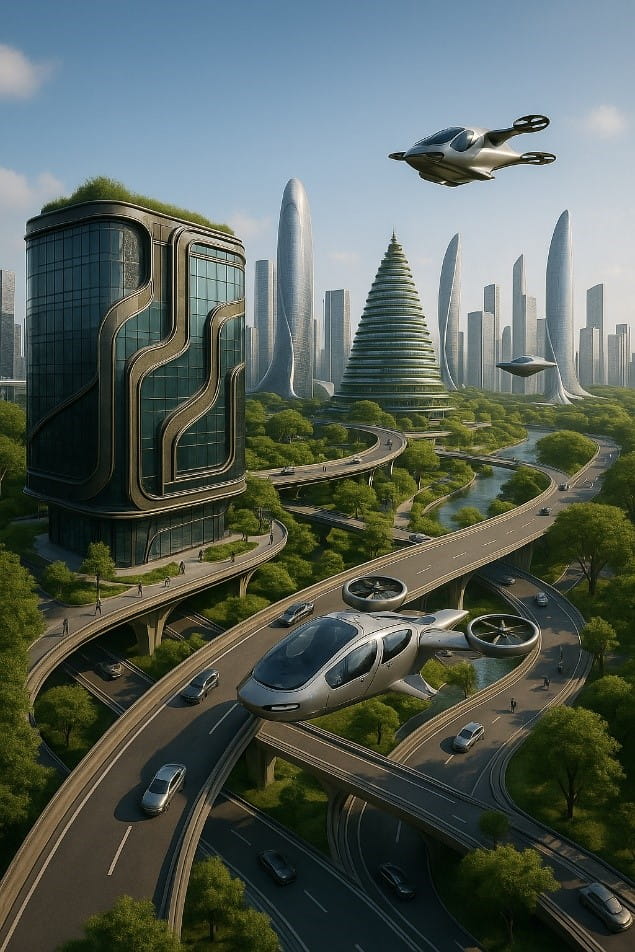
Quadri believes façades are going to become a lot more active and integrated with both building systems and the urban environment. He notes that we’re already seeing building-integrated photovoltaics making façades part of the energy system, not just the envelope. In some projects, he says, BIPV could supply up to 30% of the building’s power. Quadri adds that smart façades — with automated shading, ventilation, or glass that responds to conditions in real time — will be the norm. They’ll improve comfort and performance without anyone even thinking about it. He also highlights the role of modularity and circularity — façades that can be upgraded over time or disassembled and reused rather than demolished. That kind of adaptability, he says, is key to sustainable urban growth. He further observes that façades will become more digitally connected, monitoring air quality, communicating with city infrastructure, and perhaps even supporting urban biodiversity like the Bosco Verticale in Milan. That building, he explains, turned its façade into a vertical forest — it’s not just beautiful, it’s functional on a whole new level. In short, according to Quadri, façades will be expected to do more, not just protect, but perform, produce, and evolve.
Conclusion
The pursuit of sustainability in façades and fenestration is no longer optional but essential to meet global climate goals and evolving regulatory requirements. By leveraging cutting-edge materials, adaptive technologies, and design innovation, the industry can significantly reduce energy use, enhance building performance, and promote occupant wellbeing. The integration of smart, responsive façades that adjust to environmental changes is transforming buildings into active contributors to energy efficiency rather than passive consumers. Furthermore, circular economy principles and sustainable manufacturing processes are shaping a new paradigm where longevity, recyclability, and minimal waste define product development. As architects, builders, and manufacturers collaborate closely, the potential to create resilient, low-impact buildings grows exponentially. Ultimately, sustainable façades and fenestration are key to realising the vision of net-zero, smart cities — delivering environmental benefits without compromising design excellence or user comfort.
